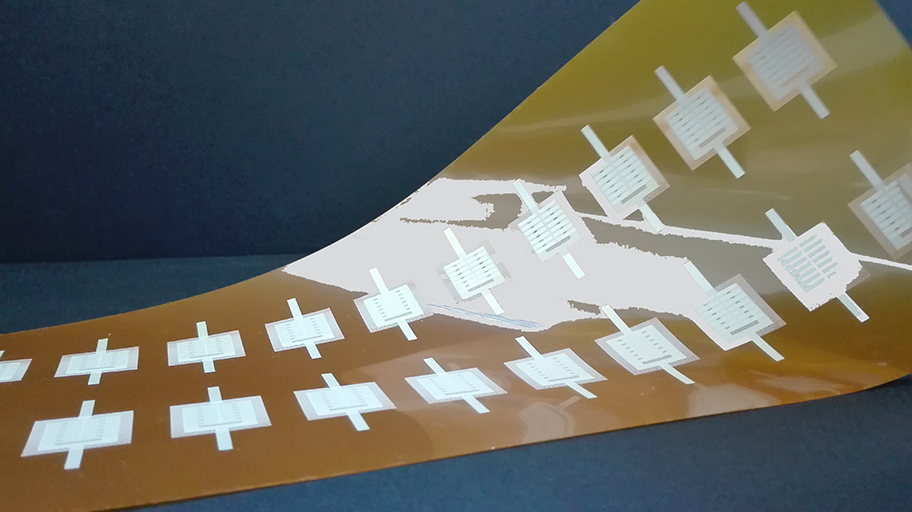Printed highly sensitive composite humidity sensors
Against the background of digitization, smart living and industry 4.0 there is a great need for universally applicable and cost-effective sensors. This also applies to humidity sensors. Here, the range of application covers for example the measurement of relative humidity in buildings and production halls, detection of (condensation) water in packages and condition monitoring of lightweight materials.
Nano or microcomposite-based moisture sensors combine the advantages of polymers and ceramics, such as ease of manufacture and high sensitivity, thus providing an excellent basis for a wide variety of applications.
At Fraunhofer ENAS, such composite moisture sensors were fabricated completely with screen printing technologies in various layouts and with active areas in the size range from one to 50 cm2 on flexible substrates (e.g. polyimide, PET) and comprehensively characterized. The moisture-sensitive dielectric of the capacitive sensors consists of ceramic particles, which are partly embedded in a polymer binder. The sensors show a capacity change of more than 100 percent according to a change in relative humidity from 20 to 80 percent r. h. as well as a sensitivity of up to 125 pF / percent r. h. As part of the sensors general built up, the screen printed electrodes are based on silver-containing pastes that gain conductivity after thermal post-treatment. In cooperation with the Chemnitz University of Technology in the framework of the Cluster of Excellence »MERGE«, composite moisture sensors were also integrated into glass fiber reinforced thermoplastics. With these sensors, a water absorption of the laminates of less than 0.5 percent by mass can be reliably detected.
 Fraunhofer Institute for Electronic Nano Systems
Fraunhofer Institute for Electronic Nano Systems